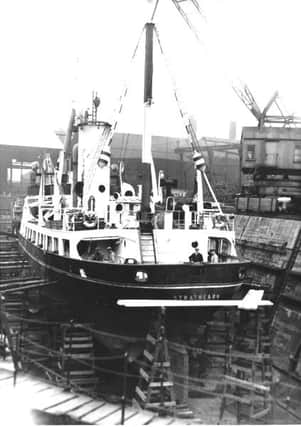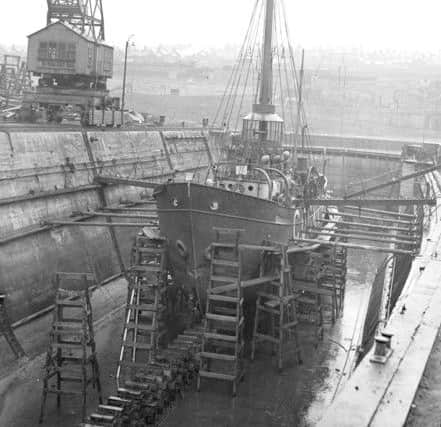ON THE WATERFRONT: Traces of old dry dock still evident on river Wear


Its origins began with the construction of a wet dock at Reigh Nook on Reigh Sand in Southwick Reach.
This was located to the west of the Salt Grass at Ayres Quay, which although in Bishopwearmouth was once referred to on some maps as being in South Southwick. A timber pond, known as Saltgrass Dock, was situated just down river.


Advertisement
Hide AdAdvertisement
Hide AdMeasuring 190 feet long by 60 feet wide, with a quay either side, the dock had been built before 1821 and formed part of Philip Laing’s shipyard, opened in 1818.
Although used for loading and unloading ships’ ballast, it was said to be capable of conversion into a dry dock at modest expense.
Philip’s son, James (later Sir James), took over control of the yard in 1843 and later rebuilt the dock, which was officially re-opened on July 19, 1860, the occasion being marked with the docking of the iron steamship Victoria, which had arrived from the Tyne for lengthening.
Tapered at its inner end, the new graving dock was some 300 feet long by 45 feet wide, sealed by a floating caisson containing sluices.


Advertisement
Hide AdAdvertisement
Hide AdIts entrance was formed of stonework, with the caisson seated on an inverted masonry arch, while the dock sides and bottom were constructed from timber.
At High Water Ordinary Spring Tides (HWOST), a depth of 13 feet of water was present over the entrance sill.
In 1913, Laing’s drew up plans to enlarge the dock to accommodate vessels up to 337 feet in overall length.
Although work began in the summer of 1914, this could not be completed until the end of 1918 due to materials and labour shortages caused by the war.
Advertisement
Hide AdAdvertisement
Hide AdAdam Scott of Westminster was appointed engineer, while Laing’s employees carried out the work themselves.
The dock entrance was widened to 52 feet with two mild steel and greenheart gates being installed, their leaves being of unequal length. Three feet deeper than the centre point of the old sill, the new shelf gave a water depth of 16 feet 7 inches at HWOST.
A new pumping plant supplied by Gwynnes Ltd of Hammersmith Ironworks, was housed in an underground chamber.
The first vessel was docked on March 4, 1919, possibly the 2,489 gross-ton steamer Barlby, which is listed as being under repair on April 1.
Advertisement
Hide AdAdvertisement
Hide AdIn regular use for ship repair until after the start of the Second World War, the dock was filled in sometime after April, 1941.
During the 1930s, lightships and tenders belonging to the Corporation of Trinity House were regular visitors.